The art of keeping your balance or in other words, balance is important both in exercise and in everyday life. This skill makes movements more precise and easier. But what should you do if you notice a disturbance in your coordination and balance? The answer is simple: incorporate a small set of exercises into your training.
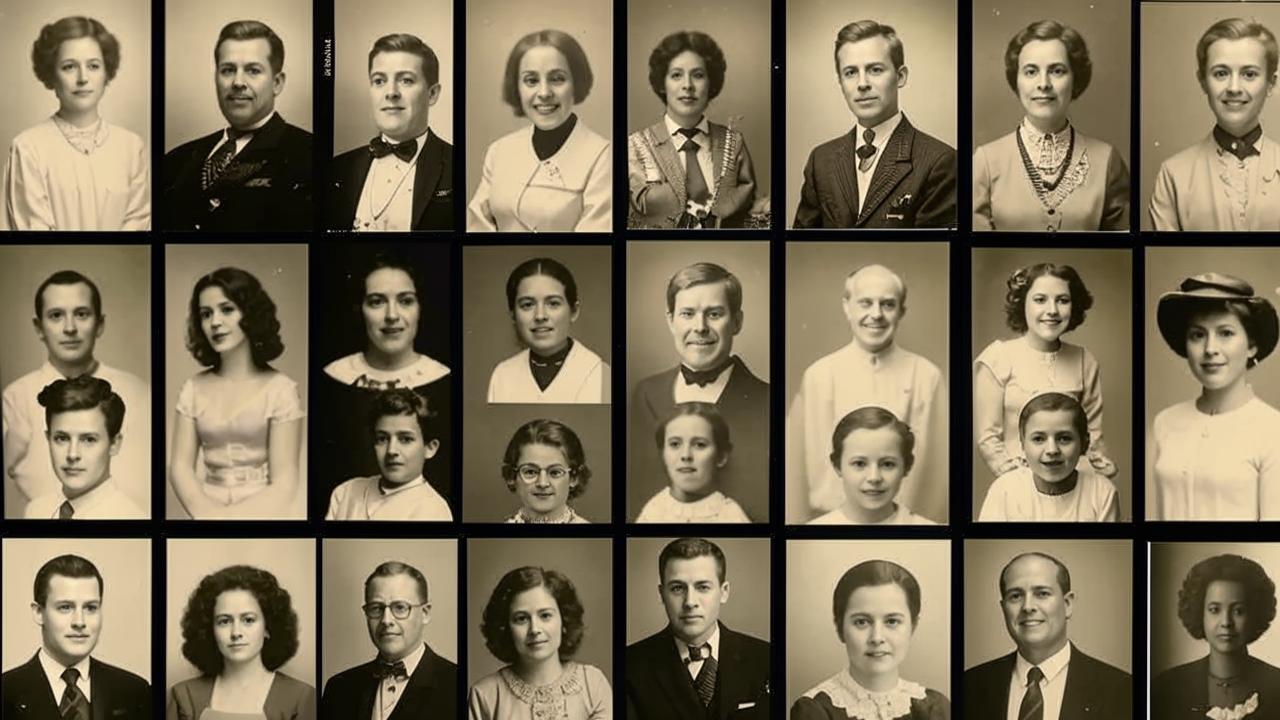
International trainer, co-author of the Vector of Youth method.
“Balance helps us not to fall in the ice, mobilize resources and get to the destination, not to the emergency room.”
What is balance for?
Balance is an essential part of our daily lives. From the moment humans learned to move on two legs, their bodies are constantly fighting gravity and the force of the support reaction to hold on and not fall. When we maintain our balance, our movements are coordinated, easy and relaxed.
Keeping your balance helps not only when you are moving from point A to point B, but also when you are pursuing a dream, such as getting unforgettable emotions and energy from surfing or snowboarding. Think about how much we could be missing out on if we don’t learn to “catch a wave” and keep our balance!
Also, by developing balance, you are investing in your overall health and condition: your muscles are strengthened, your physical performance and mental state improve, but your risk of injury is reduced.
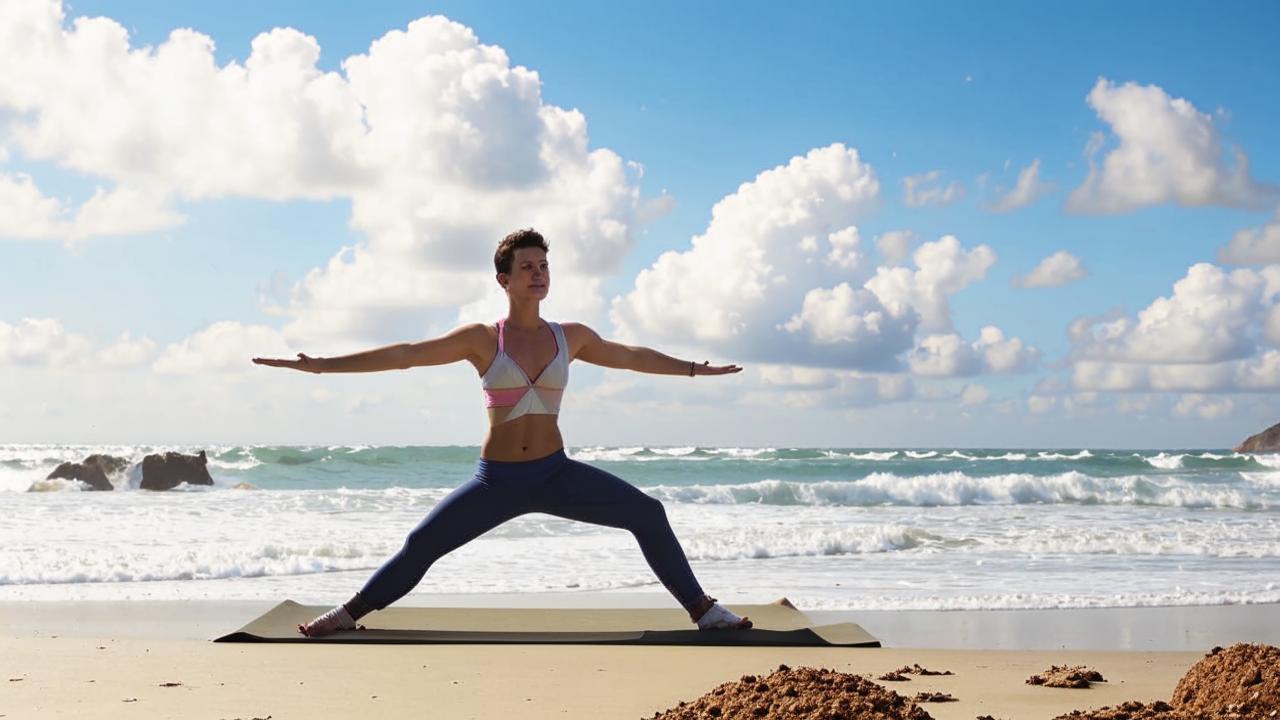
Why do some people have poor balance?
Deteriorating balance can be due to a variety of reasons, including the presence of medical conditions. It could be poor eyesight, vestibular problems, joint problems such as arthritis or a history of injury. The list could go on for a very long time.
Let’s talk about non-medical causes that we ourselves can influence. In this category, the main reason for loss of balance is a decrease in proprioception, or in other words, sensitivity. This means that the nervous system stops observing certain areas on its “body map”. And how can you control them if you can’t see them? That’s right – you can’t.
Proprioception – feeling the position of body parts relative to each other and in space.
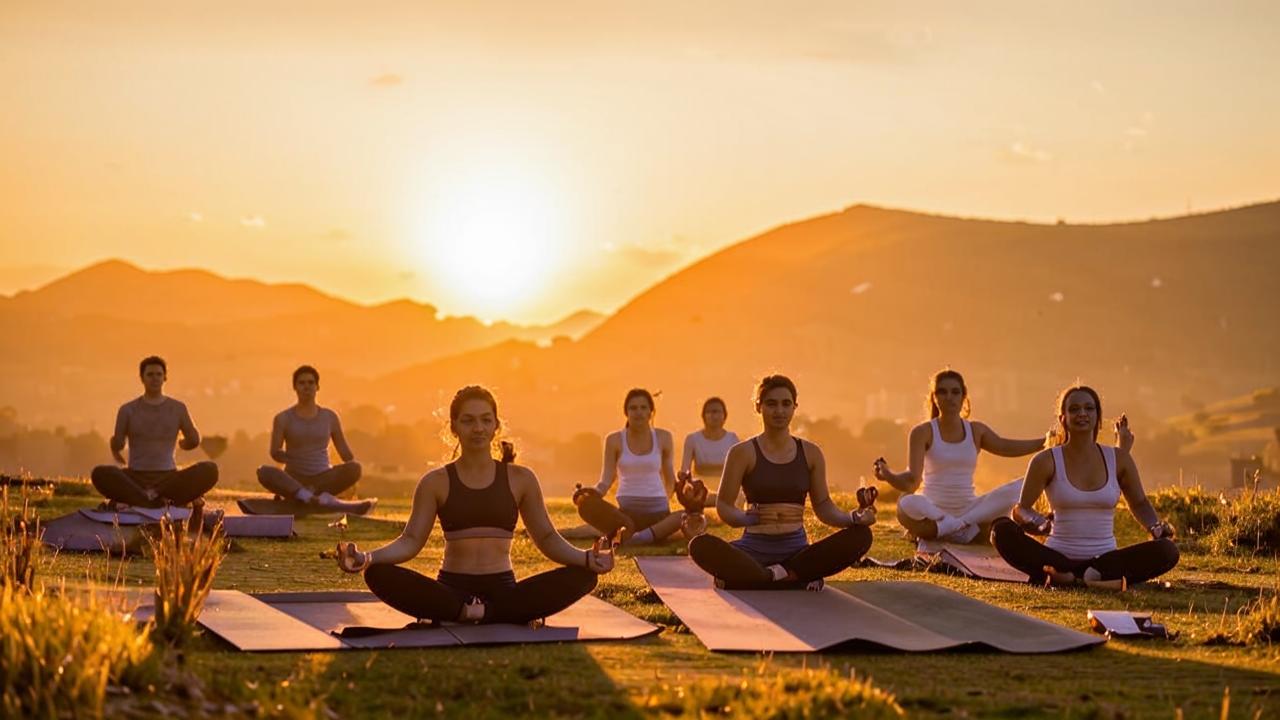
Another reason is the lack of coordinated work of body parts (for example, the movement of an arm and a leg). Imagine that in an orchestra each musician starts playing his part without listening to the others. In this case, instead of a beautiful melody, listeners will hear only noise and cacophony.
It is important to realize that to maintain balance, the muscular corset must be well developed. If you lead a sedentary lifestyle, your sense of balance may also be impaired.
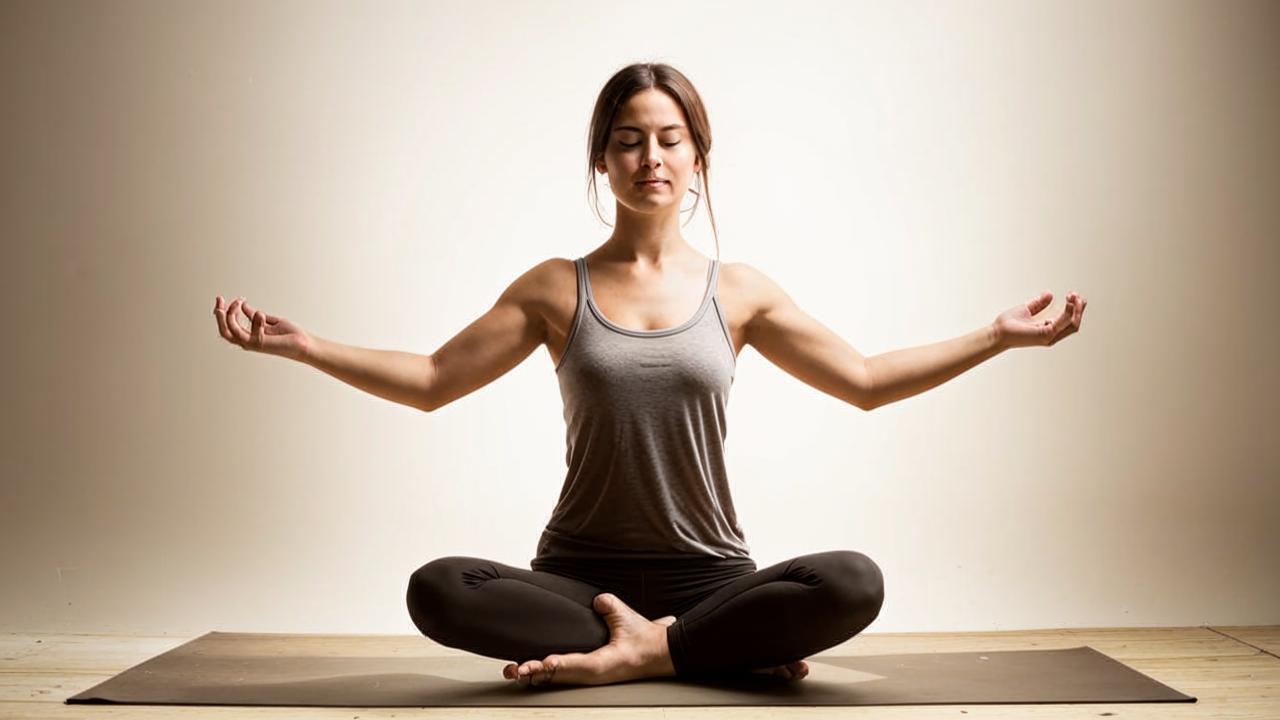
Yoga teacher
“Body balance is not just a physical condition, but is the key to harmony and success in all areas of life. Don’t put off taking care of yourself for later – start right now to develop your coordination, strength and flexibility. Strive for harmony and balance – and you will see how life is filled with new colors and opportunities. Your body and soul deserve it.
How do you practice balance?
There are several techniques to work on this skill, and you should choose one based on your goals and abilities. Specific exercises will help you achieve results.
- Training on an unstable surface. They are great for engaging the deep muscles that keep our body upright.
- Workouts to improve proprioception. This will make you much more aware of your body’s position in space.
- Training with minimal points of support (for example, doing exercises on one leg). A more difficult variant is with your eyes closed.
- Integration training. These improve the interaction and synchronization of all parts of the body.
- Walking or running on uneven surfaces such as sand or grass.
- Dancing and dance-based fitness routines.
- Yoga practices.
Exercises to develop balance
Consider specific exercises, the daily performance of which will allow you to develop balance and cope with even the most unstable situations. You can practice them at home, you will not need any equipment.
Exercise 1
Técnica
- Stand up straight, transfer the body weight to one leg. The supporting leg can be slightly bent at the knee. The pelvis is directed forward. Place your hands on your pelvis.
- The other leg is slightly extended backwards. The body from the top of the head to the toes of the free leg is a straight line.
- As you inhale, start leaning forward and down, bringing the body to parallel with the floor. The other leg extends backward and upward.
- Note that the free leg goes up as long as you keep a straight line from the top of your head to the tips of your toes. If you want to make it harder, extend your arms forward.
- As you exhale, return to the starting position.
Perform 8-12 repetitions and then change the supporting leg.
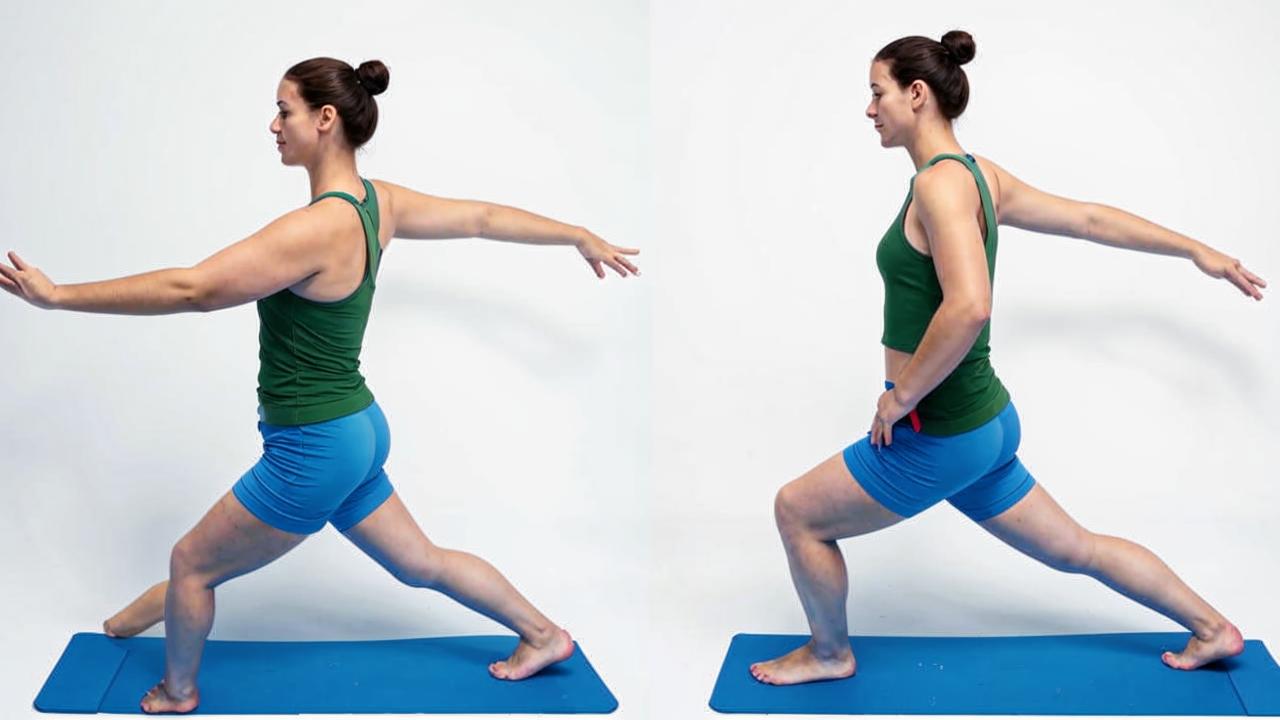
Exercise 2
Técnica
- Stand up straight, legs wide apart, feet slightly turned outwards. The top of the head is stretched upwards, the pubic bone is slightly drawn towards the navel, the spine is in a neutral position. The arms are lowered along the body.
- As you inhale, do three “springs” in a wide squat, keeping the spine neutral and the top of the head extended. At the moment of performing the “spring” arms are stretched out to the sides.
- With an exhalation, push off and transfer the body weight to one leg, with the body tilted toward the supporting leg. Move your arms up, stretching from the top of your head to the tips of the toes of the free leg.
Perform 8-12 repetitions, alternating sides of the lift.
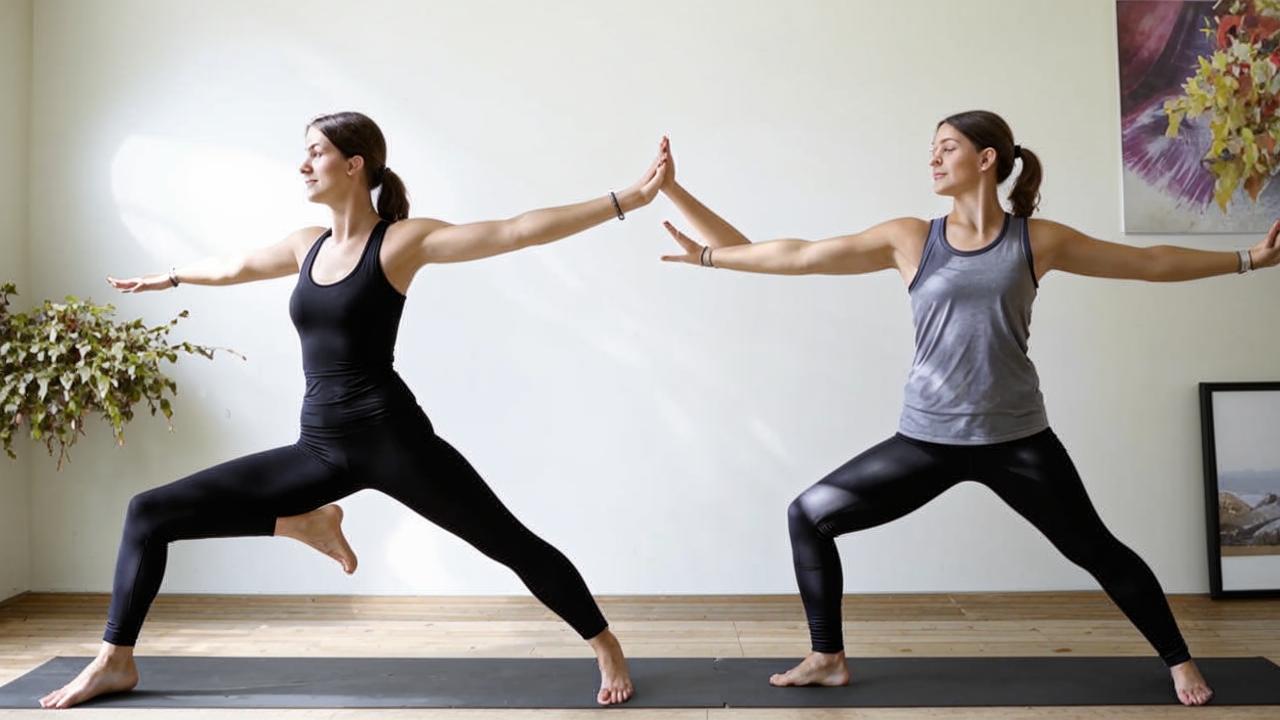
Exercise 3
Técnica
- Stand up straight, transfer the body weight to one leg, the top of the head is stretched upwards, the spine is in a neutral position. The foot of the free leg is placed on the shin of the supporting leg. Hands – in front of the rib cage, palm pressing on the palm of the hand.
- The knee of the bent leg turns to the side, opening the pelvis. Imagine that both halves of the pelvis seem to be moving away from each other.
- As you inhale, straighten the knee of the free leg and extend the leg to the side. Maintain axial extension.
- As you exhale, return to the starting position.
Perform 8-12 repetitions for each side.

Exercise 4
Técnica
- Take a low squat position, legs almost closed, support on the toes of the feet (first and second toes), heels lifted up. The top of the head is pulled upward, spine in a neutral position. Arms are in front of the rib cage, palms pressing against each other, shoulders straightened and down. Keep the knees extended forward over the first to second toe of the foot.
- If your balance is good in this position, close your eyes.
- Maintain a voluminous, calm breath.
Perform four or five cycles of breathing.
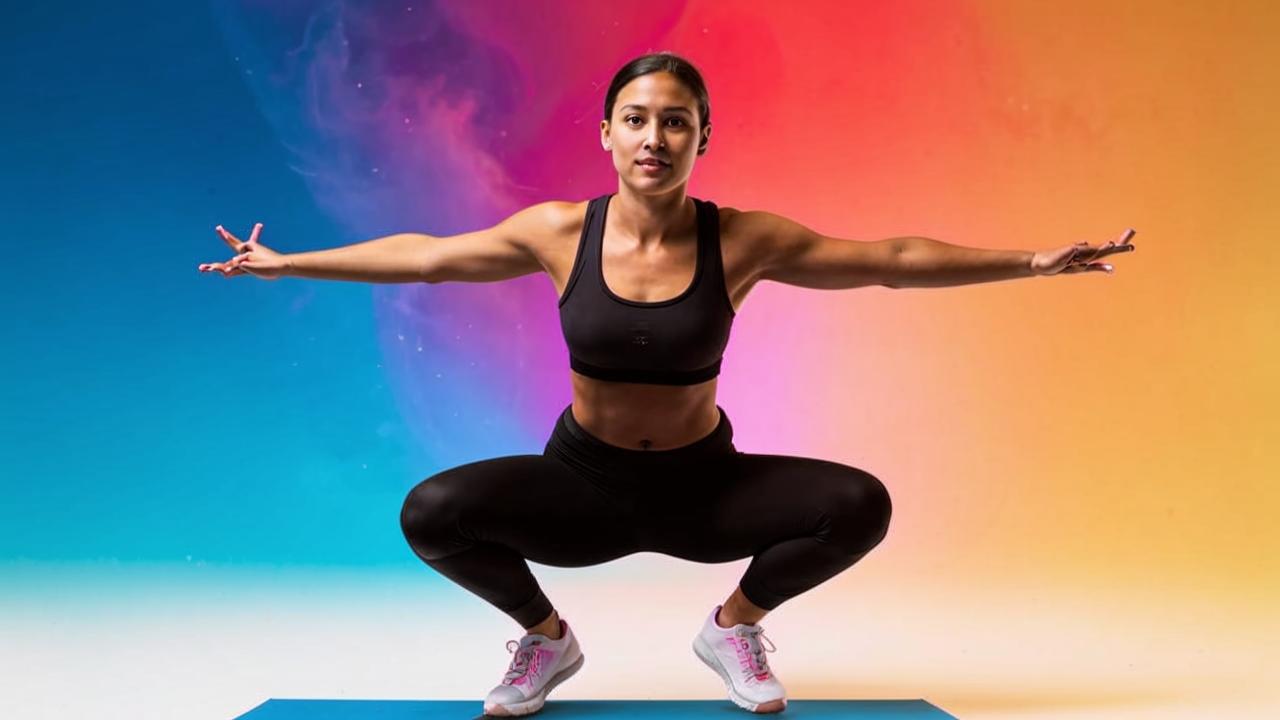
Exercise 5
Execution technique
- Take the position of a deep squat with a wide stance of legs, feet pressed to the floor.
- With an exhalation stretch your arms forward, pull the pubic bone to the navel and round the back.
- As you inhale, rise up on your toes, raise your pelvis to parallel with the floor, arms apart. The top of your head is pulled up, spine in a neutral position, knees turned sideways and pointing at the first to second toe of the foot.
Perform 8 to 12 repetitions.
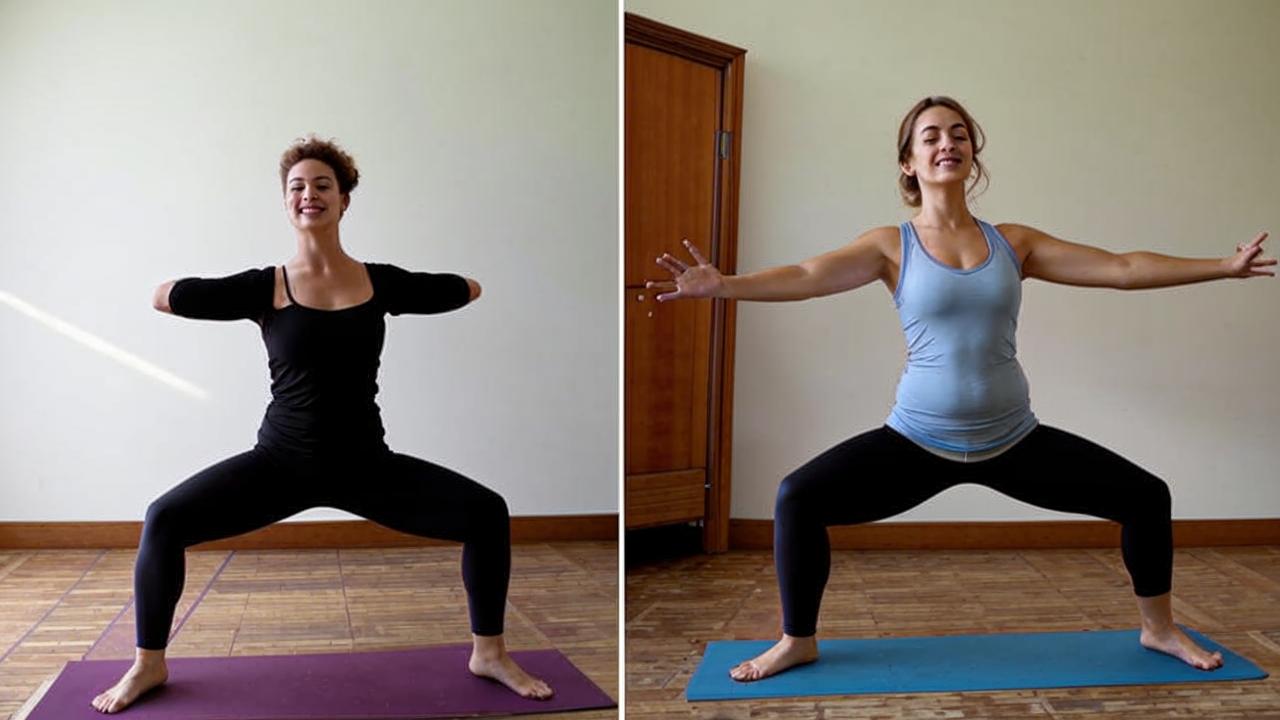
Yoga for Balance
Do a body warm-up before you start practicing, regular joint exercises will do. Stay in each asana for 7 or 14 breathing cycles, count your exhalations. Enter the position on the exhale and exit on the inhale. If you are new to yoga, it is advised to study each asana carefully first, talk or practice with an instructor.
Vrikshasana – tree pose
Técnica
- Stand straight, put the right foot on the toe and transfer the body weight to the left foot, press it tightly against the surface, spreading the toes. With the left leg straight and stable, lift the right leg. Place your hands on your waist or keep them parallel to the floor.
- Place the right foot on the inside of the left leg at a comfortable height, bend the knee. Shoulders and pelvis in the same plane. Head in line with the spine. Stretch from tailbone to the top of the head, chest open. Look at the point in front of you, keeping your balance.
- Feeling the balance in the body, lift the right heel to the crotch area, hand resting the foot against the inside of the left thigh. Extend the arms above the head and join in front of the chest in namaste. Bring the right knee to the side, opening the right hip joint, do not turn the pelvis. Back straight, extend from the tailbone behind the top of the head. Breathe deeply and balance.
- Come out of the position on an inhale and repeat the same on the other side.
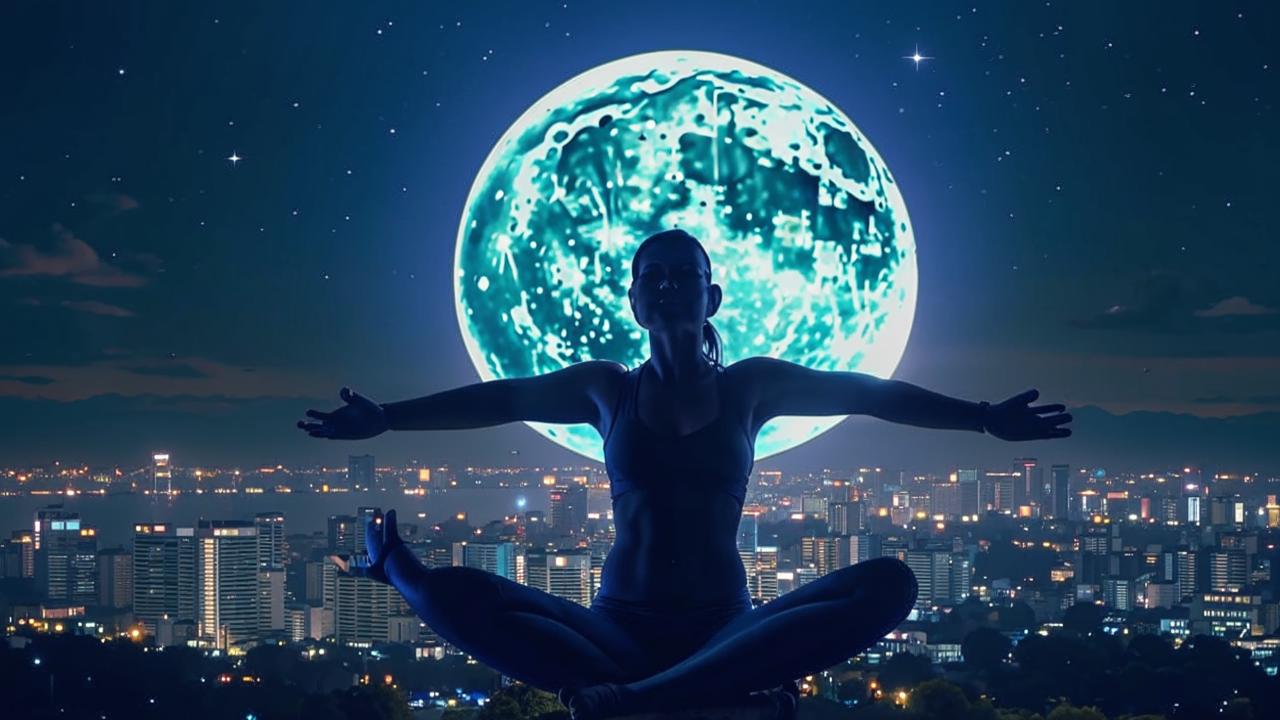
Uttanasana is an intense stretching pose
Técnica
- Stand up straight, bring your feet together, press them against the mat, arms along your body.
- Perform a shallow bend, the back should be straight. The palms can be placed at the base of the thighs or lower, where the body allows. The weight is distributed evenly over the entire surface of the feet. The pelvis, shoulders and head are in a single line. Extend the spine from the tailbone past the top of the head.
- Continue lowering into an incline. When your belly is on your hips, place your hands on the floor or grasp the back of your legs and bring your forehead as close to your knees as possible. Breathe deeply, keeping your balance.
- Pull yourself up with your arms toward your legs, using your hands as leverage. The pelvis pulls upward. The feet aim for the floor. Keep your legs strictly straight. Balance.
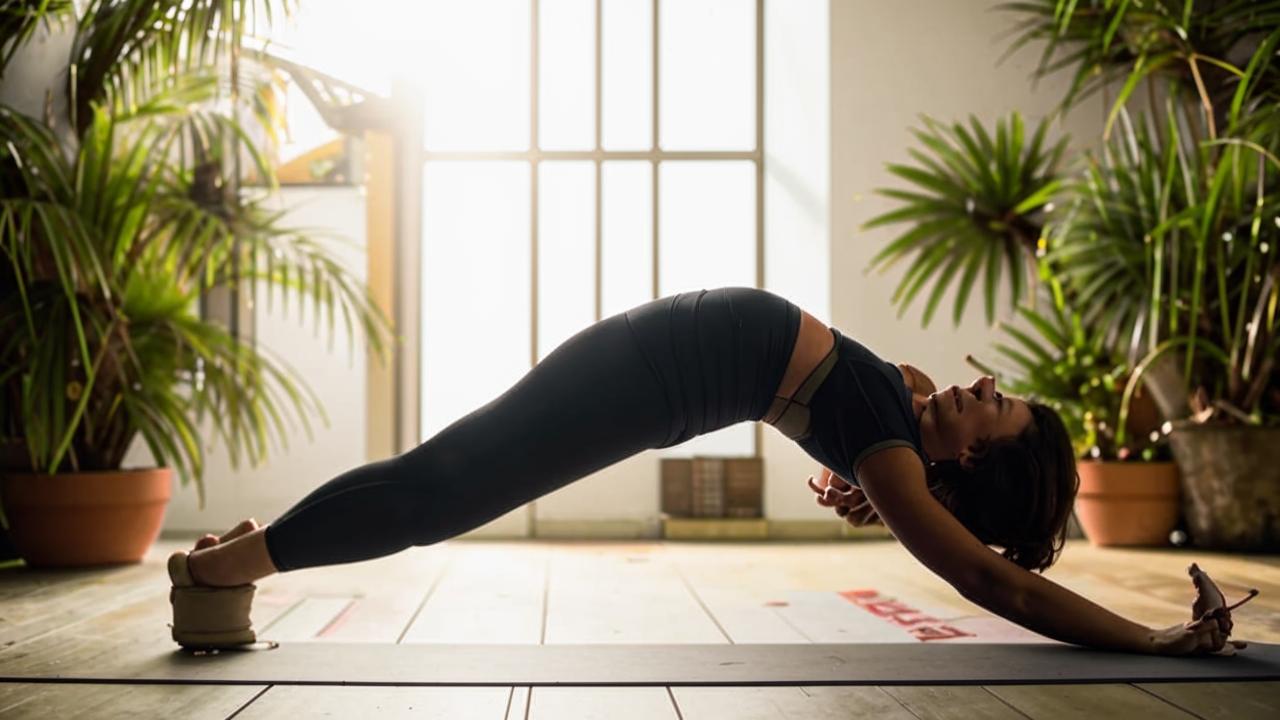
Virabhadrasana I – warrior pose I.
Técnica
- Stand straight, feet wide apart, about 120-135 cm.
- Turn the right foot 90 degrees and the left foot slightly inward for stability. Make sure that the invisible line from the heel of the right foot comes to the center of the left foot. The feet are pressed firmly against the mat, with your body weight evenly distributed between them.
- Turn the body toward the right foot, shoulders in the plane of the pelvis. Bend the right leg in the knee so that the knee does not go beyond the heel.
- With an inhale, raise your arms above your head, bring your palms together. Chest open, stretch from the tailbone behind the top of the head. Direct your gaze in front of you. Shoulder girdle and torso are clearly turned forward.
- Lower your pelvis so that your knee is over your heel and your thigh is parallel to the mat. The angle between the thigh and shin is 90 degrees.
- On the inhale, extend from the tailbone with the spine, deepen the flexion.
- On the exhale, sit deeper with emphasis on the bent leg. Gaze behind the palms upward.
- Come out of the position on the inhale and repeat the same on the other side.
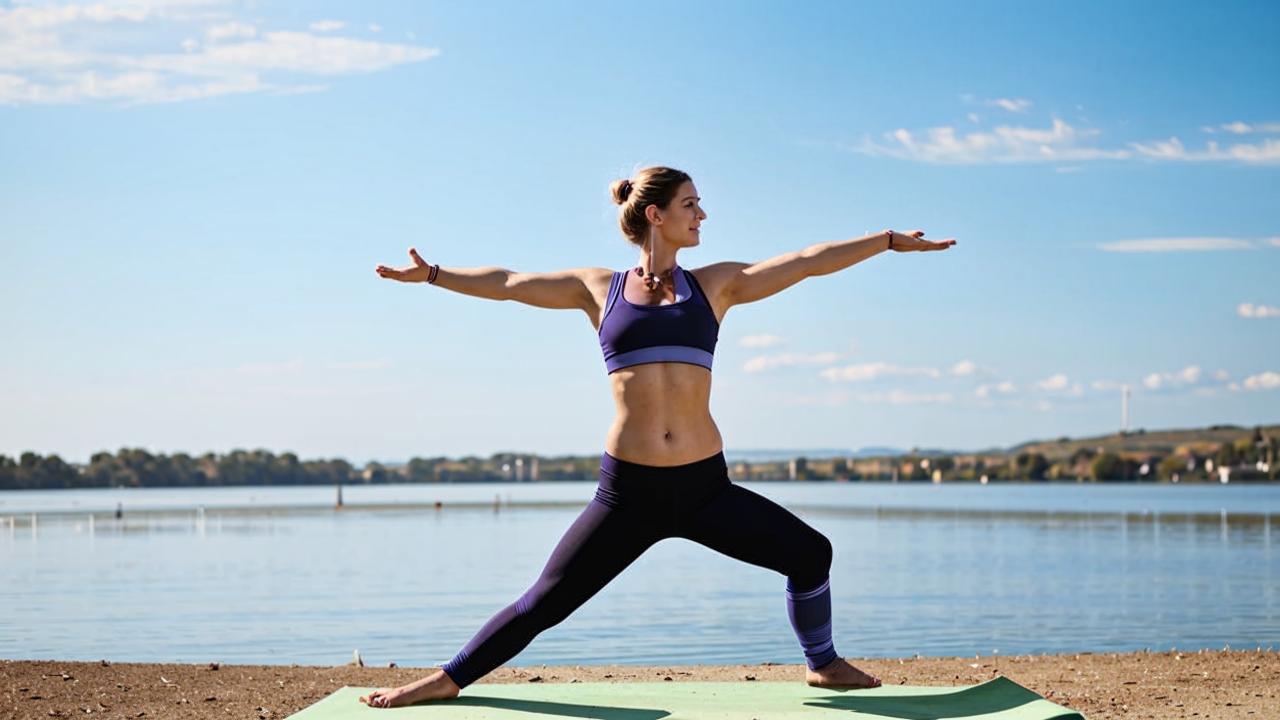
Shavasana
Execution Technique
- Lie on your back, turn your legs on the edges of the mat, arms stretched at an angle of 45 degrees relative to the body, palms up. Put your head flat. Eyes closed.
- Breathing is natural, calm.
- Lying down should be comfortable, so prepare a mat. If there is a desire – you can cover yourself with a plaid, it will allow you not to be distracted by the feeling of cold.
- Take a position, do not move and relax. Perform one to three minutes.






